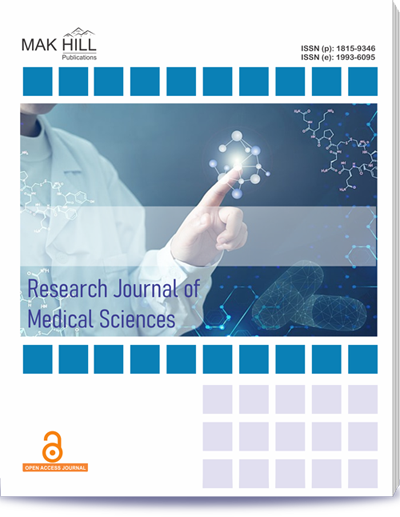
Research Journal of Medical Sciences
ISSN: Online 1993-6095ISSN: Print 1815-9346
1
Views
3
Downloads
Serum Iron's Predictive Value for Heart Failure with Reduced Ejection Fraction (HFREF) in Patients with Acute ST‐Segment Elevation Myocardial Infarction
K. Raghunandhan, R. Kiruthika and S. Mohamed Fahrudeen
Page: 148-153 | Received 15 May 2025, Published online: 08 Jul 2025
Full Text Reference XML File PDF File
Abstract
Heart failure with reduced ejection fraction (HFrEF) following acute ST‐segment elevation myocardial infarction (STEMI) considerably affects morbidity and death rates. Identifying predictive biomarkers for HFrEF can facilitate early management and enhance results. This prospective cohort study included 50 patients following STEMI, evaluating the predictive significance of baseline serum iron concentrations for the onset of HFrEF during a six‐month period. Statistical analysis included logistic regression to account for relevant confounders. The prevalence of HFrEF at six months was 40%. Patients with HFrEF exhibited markedly lower baseline blood iron levels than those without (58.4 μg/dL vs. 70.1 μg/dL, P=0.033). Multivariate analysis indicated that a 10 μg/dL reduction in serum iron correlated with a 25% elevation in the likelihood of developing HFrEF (aOR 1.25, 95% CI 1.07‐1.45, P=0.005). The sensitivity and specificity of serum iron levels in predicting HFrEF were 60% and 66.7%, respectively. The serum iron levels upon admission following STEMI are a strong predictor of the development of HFrEF within six months. These findings support the incorporation of serum iron level assessment in the post‐STEMI evaluation, underscoring the possibility of early treatment measures.
How to cite this article:
K. Raghunandhan, R. Kiruthika and S. Mohamed Fahrudeen. Serum Iron's Predictive Value for Heart Failure with Reduced Ejection Fraction (HFREF) in Patients with Acute ST‐Segment Elevation Myocardial Infarction.
DOI: https://doi.org/10.36478/makrjms.2025.148.153
URL: https://www.makhillpublications.co/view-article/1815-9346/makrjms.2025.148.153